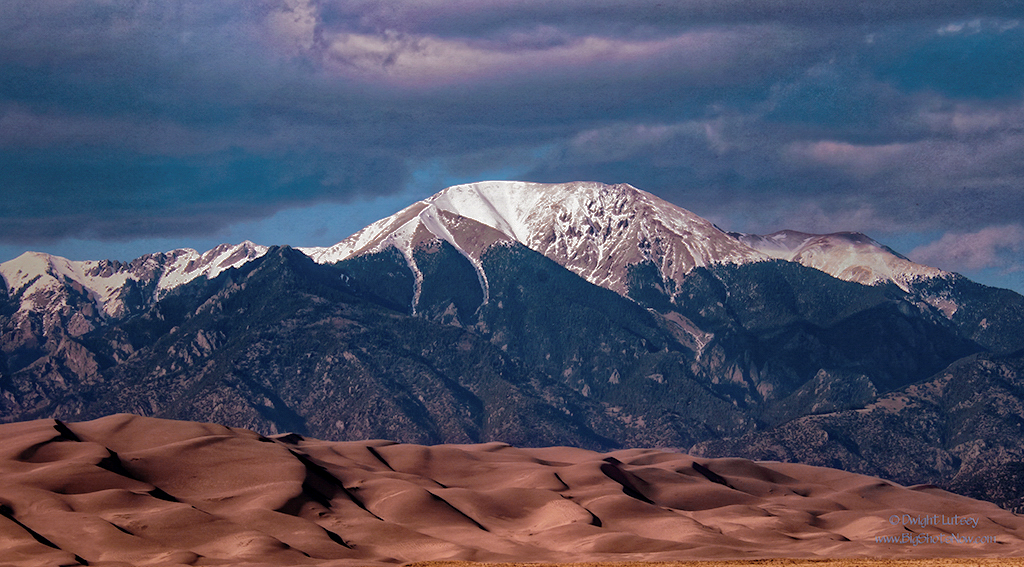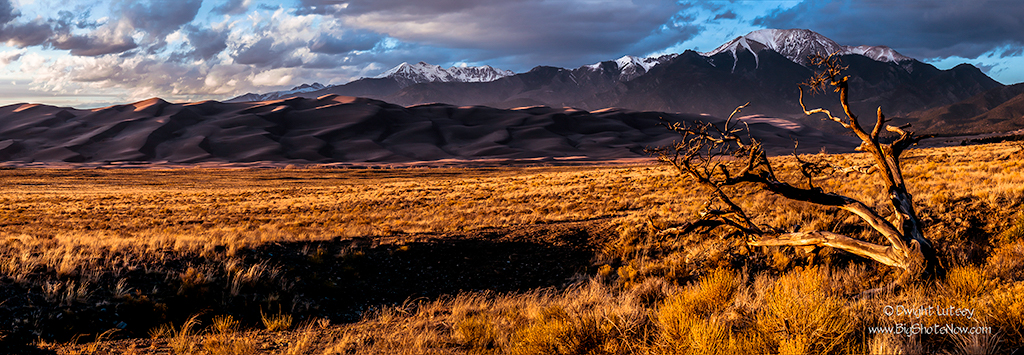
We do not usually issue dire warnings here at *The Institute but we felt that this new discovery warranted immediate publication. Many of you know from friends and family or seeing old videos on the Travel Channel that we have a world-famous collection of Sand Dunes here in America. In Colorado in fact, down near Alamosa in the southern part of the state.
You can find them right next to the road and stop and look at them for absolutely no cost for as long as you want. This a right given us by Mother Nature and signed off on by the Colorado House of Representatives, the State Senate and by our Governor as well.
However the problem and hence the unexpected issuance of the dire warning has to do with a problem that our team of Sand and Gravel and Indigenous Rock researchers have come across. We have researchers that travel the U.S. picking up rocks of all types, big, little, round, flat, those shaped like Uncle Skid’s nose, nicely colored ones, ugly ones, a few that are so large we can’t cross bridges with them on our flatbed trailer we haul along behind one of our research vessels. Consequently we have to dump them alongside the road at the first sign of a bridge. This research is critical to determining just how many stones, rocks and other hard things of a sedimental-like nature we have laying around on our American soil.
As the team proceeded with their gathering of rocks along the edge of the Great Sand Dunes they made a startling discovery. Each morning when they returned to begin picking up rocks they noticed that the dunes had moved father to the right. That’s right the whole darn dune. To test their theory they left a rock right up next to the edge of the tallest dune at the end of the day and sure enough the dune had moved to the right significantly. “Holey Pantalones” they cried. ” The Dunes they are moving. Wowser!” ( I know, we don’t always get those cool quotes you hear those fake scientists in the movies make.) They were stunned. If this is accurate and who says it isn’t unless you came out here and did the work yourself, hauled your own rocks and had to drink warm Tang and everything to keep from collapsing in the noon day sun, then we might pay attention to what you think.
These are real live scientists from The Institute here and if they say the dunes are moving we think you should listen up and pay attention. What for, you might ask. How does this directly affect me? Well, consider this. You’re sitting home in your Barcalounger drinking watered down EverClear and the love of your life comes in and says” Cranston, You’re a fat slob. And you’re drunk too. We’re taking the kids to the Great Sand Dunes on a vacation. Go gas the car.” There is absolutely nothing to be said to that so you go gas the car. Two thousand miles later because you probably live in Pennsylvania or one of those funny little shaped states up near Maine somewhere that would fit in one of our garages out here, and you’ve got all seven of the kids with you and they already pulled all the stuffing out of the backseat to make a campfire on the console because they want to make s’mores and you won’t stop. You’re looking for the turn off to the Great Sand dunes and when you finally see the road you take it and what do you see at the end where all those dunes are supposed to be, nothing. The dunes have moved dude. They are like way the hell and gone down to the right. That’s correct, two thousand miles, screaming kids, your wife is telling you she is going to get a tattoo as soon as she gets home, and no Sand Dunes. Whatcha gonna do now.
If you had listened to us and paid attention when we said the dunes are moving. You would have gotten here, seen the dunes, sent the wife and kids off on a hike into the bear infested woods along the dunes where the compasses don’t work because of the high metal deposits concentrated under the sand, and it would be quiet again. Blessedly quiet. You could head back home through Vegas, yeah we know that’s a little out of your way, but so what. Get a room, play the quarter slots for a while, then point it back East listening to Springsteen and other people your kids hate. So, you going to listen to us, or what. We don’t do all this hard work for nothing. We do it for the good of the nation and the people that live in it. Don’t be a doofuss, pay attention when we tell you stuff. You never know when it will help you out.
* Note: For those of you unfamiliar with The Institute and what it does, please see the page labeled The Institute on the Menu Bar above. That should explain everything. You shouldn’t have one single question remaining regarding The Institute after reading it. None. For those of you favored few who already know about the Institute, Nevermind.



You must be logged in to post a comment.